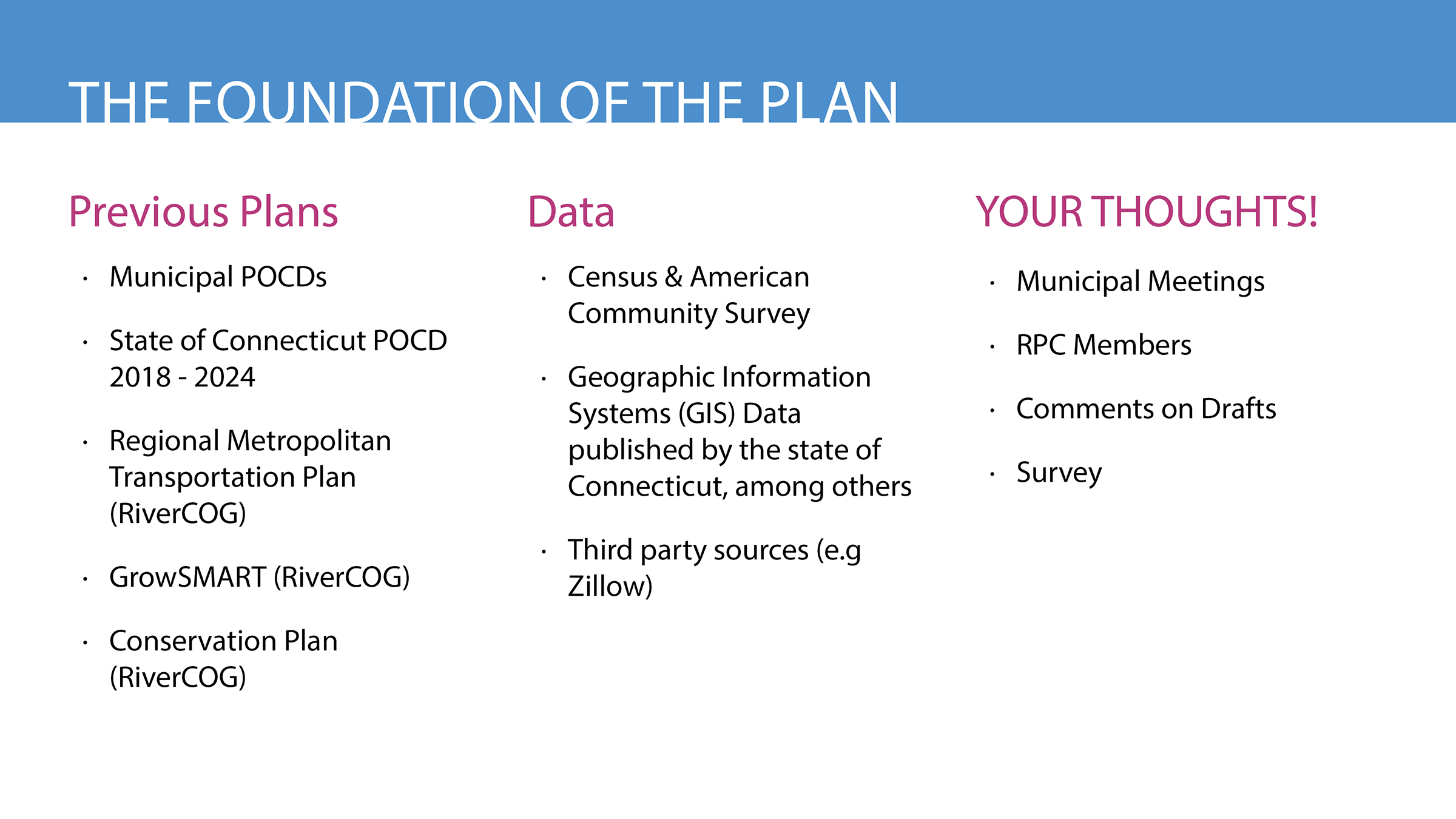
What is an RPOCD?
The Regional Plan of Conservation and Development (RPOCD) is a visionary policy document. This means that it is not binding on municipalities and commissions in the region. Rather, it is an aspirational document, identifying preferred land uses, development patterns and types, and desirable areas for conservation over the next 10 years, based on existing and emerging regional trends and challenges. Overall, the job of an RPOCD is to balance the needs of both conservation and development, paying particular attention to areas where these interests compete as well as those where there is mutual support.
The RPOCD can be a tool used to guide funding for projects in the region and its creation is required under Connecticut Statute (CGS Chapter 127 Section 8-35a).
You may be familiar with the State POCD or the POCD for your city or town. The RPOCD is similar, but with a regional perspective.
How is an RPOCD used?
An RPOCD impacts decision making at the regional level. This includes guiding the review of land use proposals, establishing funding priorities, and identifying projects of regional significance.
Equally important, an RPOCD can serve as a major resource to municipalities. It is based on the collection and analysis of large amount of data that can be useful in local decision making.
An RPOCD also makes recommendation on how to achieve the regional vision. These plans can serve as a foundation for future municipal work. By establishing this foundation, an RPOCD can save municipalities time and resources.
Finally, by working regionally, municipalities can cooperate to maximize benefits and minimize costs that local land use decision
Foundation of the Plan
Although this is the first RPOCD for the region, we will not be starting from zero. The plan will be, first and foremost, based on a review of the municipal POCDs in the region. In addition, the plan will utilize relevant data and analysis from previous State and RiverCOG reports.
Key Components of the Plan
The final RPOCD will contain three important pieces:
- Existing Conditions Report
The Existing Conditions Report will not technically be part of the plan itself. It will be a stand-alone document, attached to the report as an appendix, that will focus on current trends and key issues in the region. It will be graphically rich, with maps, images, and diagrams, to convey the information, and will form the basis for the recommendations in the plan. - Goals and Objectives
The goals and objectives will be based on the findings in the Existing Conditions Report. These goals and objectives will lay out recommendations and strategies for addressing key issues in the region. They will serve as our roadmap for how to move forward over the next 10 years to realize our vision. - Future Land Use Map
The Future Land Use Map is the vision for the region. Based on the findings in the Existing Conditions Report, the Future Land Use Map will provide a graphic depiction of where growth and development should occur and what areas should be set aside for conservation. Importantly, this map is not intended to be a parcel by parcel analysis. It is a visioning tool, meant to be conceptual. It will be up to individual municipalities to make parcel level decisions, consistent with the vision in the plan.
These documents will be posted on the Regional Plans page when available for public review and/or comment.

